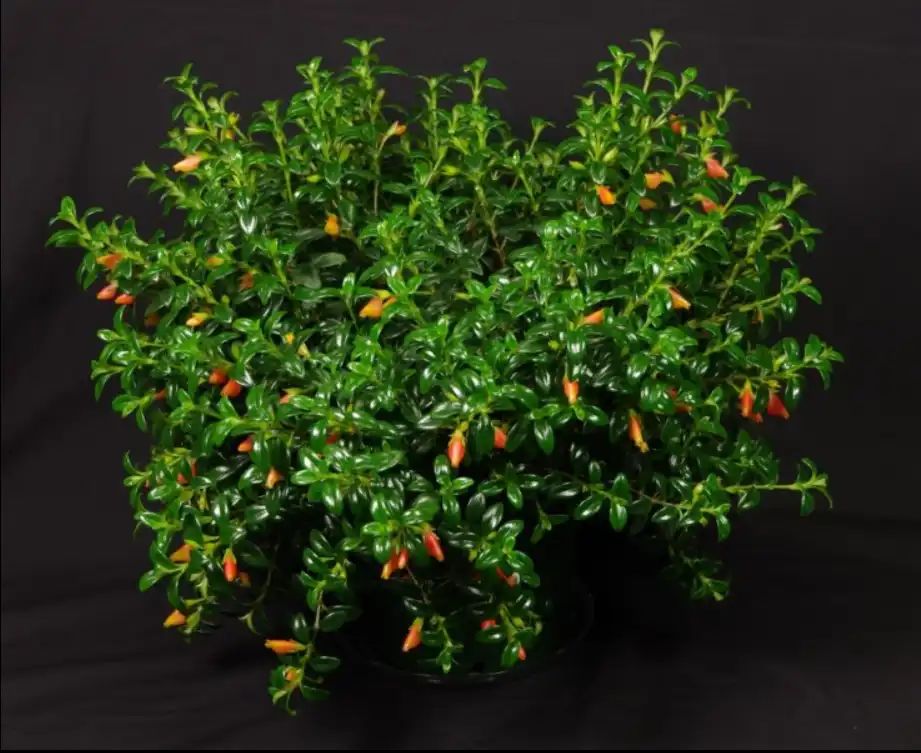Goldfish plants, also known as the “goldfish plant,” columnea has curved tubular flowers, named for their blossoms resembling jumping goldfish, and are vining relatives of African Violets. Blooming is minimal in winter due to low light levels. For robust spring flowering, keep the soil dry but ensure it never dries out completely. Pruning the stems to 18 inches promotes bushier growth. Enhanced humidity is a requirement for Goldfish Plants, which thrive in bright light without direct sun exposure and receive constant moisture. However, providing the Goldfish plant with the proper care, including light requirements and temperature control, is essential.

Light Requirements
Choosing the right spot for your houseplant is crucial for its success, as plants require light for growth. Light intensity and duration are influenced by factors such as the angle of sunlight through windows, indoor and outdoor trees, and reflective surfaces like mirrors. Most houseplants prefer bright, indirect, natural light, except for a few that thrive in direct sun.
Light availability varies seasonally, and adjustments may be needed, like moving plants to brighter spots in winter and shadier areas in summer. Too much light can burn foliage, while too little light can make a plant leggy and lead to leaf loss. If moving the plant isn’t feasible, consider using artificial light to supplement.
Different Light Levels
Light levels are crucial in developing a plant’s roots and shoots. Different light levels for houseplants can be categorized into low, moderate, and high light intensity levels. These varying light conditions influence plants’ overall health and growth patterns, impacting root and shoot development. Different light levels and ideal spots for the household plants are:
| Light Intensity | Ideal spot for Indoor Plants | Examples of Plants Suitable |
| Low sunlight exposure | Far from any windows | Some low-light-tolerant plants are like the snake plant or ZZ plant. |
| Moderate sunlight exposure | 5-8 feet from a sunny window | Plants like Pothos or Spider Plants thrive in medium light. |
| Indirect, bright sun rays exposure | Place the plant in a window where it gets direct sun. | Many common houseplants like philodendrons or rubber plants prefer bright, indirect light. |
| Less than 5 hours of direct sun ray exposure | Daily receives at least 3-5 hours of direct sunlight exposure. | Plants such as goldfish, basil, herbs, and flowering plants can flourish with some direct sunlight. |
| Direct sun ray exposure | At least 4-5 hours of direct sun each day. | Cacti and succulents are well-suited for full sun. |
Best Location
Ideal locations include an east or west-facing windowsill or positioning a few feet away from a south-facing window. However, plants on the western side may require protection from excessive heat during the summer. This environment is conducive to flourishing flowering plants like Goldfish plants and herbs.
Read: Goldfish Plant Care: Dealing with Common Diseases and Pests
Despite this, as the summer sun intensifies from March to September, shading becomes increasingly essential when some plants cannot withstand the full intensity of the summer sun. Direct sunlight benefits goldfish plants; however, they should not receive more than 2-3 hours (less than 5 hours) per day of direct sunlight[1]Goldfish Plant Care Guide. Read.

Signs That Plant is Not Getting Enough Light
The signs indicate that the plant is not receiving sufficient light for healthy growth and development. Adjusting the lighting conditions may be necessary to support the plant’s well-being.
- Lack of growth or slow development in the plant, like slow flowering and blooming in the goldfish plant.
- Noticeably longer spread in leaves in new growth than in older plants, or new leaves are considerably smaller than older leaves.
- The newer foliage exhibits a lighter shade of green than the older leaves.
- Older leaves show signs of wilting or drop.
Seasonal Light Requirements for Goldfish Plant
Spring is the time to take advantage of the longer daylight hours by providing Goldfish Plants with around three hours of direct morning sunlight for better development of the Goldfish plant. The situation changes when fall approaches; in winter, a south-facing window will provide adequate light without being too bright[2]Goldfish Plant Light Requirements. Read.
| Season | Light Requirement | Care Tips |
| Spring | – Direct morning sunlight for 3 hours- Adjust to increasing day length | – Be cautious of leaf drop in higher temps |
| Fall/Winter | – Less light availability- South-facing window for adequate light- Adjust watering to reduce needs | – To simulate hibernation with reduced water- Avoid excessive brightness to prevent stress |
Read: Goldfish Plant – Care, Propagation, and Varieties
Best Light Exposure for Indoor Plants
- Eastern exposure is cooler than southern or western, causing less water loss. Eastern exposure to light offers direct morning sunlight until midday.
- Southern and western exposures are interchangeable for most plants. Southern light exposure provides varying light conditions, with the low winter sun across the room during daylight hours.
- Northern exposure receives the least light and lowest temperature year-round, challenging plant health. However, Plants with green foliage are suited for northern exposure, while variegated foliage may lose coloration. However, most indoor plants may tolerate, but not thrive, in northern rooms for short periods.

Conclusion
The abundance of light directly correlates with increased food and flowering production, boosting the growth phase. Lighting is essential to the well-being and successful growth of indoor plants. However, by aligning care with seasonal light requirements, you ensure the well-being and flourishing growth of your Goldfish Plant throughout the year. This article has demonstrated the light requirements needed for the Goldfish Plants.
References
| ↑1 | Goldfish Plant Care Guide. Read |
|---|---|
| ↑2 | Goldfish Plant Light Requirements. Read |



